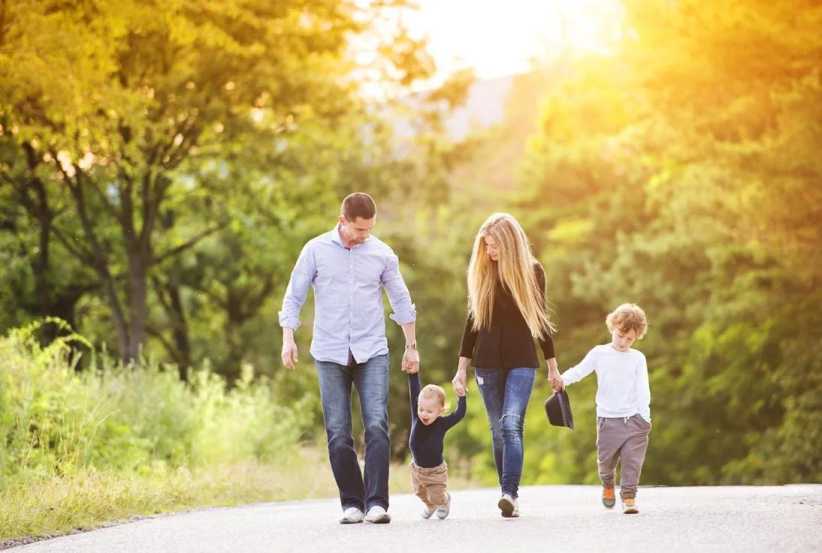
New York City is full of impactful charities that strive to create change in our local communities, our country, and the world. From creating safe spaces for LGBT youth, to helping children raised in low-income families get into competitive schools, to influencing the next great innovators in Africa, there is seemingly an organization for every needy cause. Here are the stories of four inspiring local charities that make it their mission to make life better for local children and families.
African Leadership Academy & African Leadership Foundation
At the age of 14, William Kamkwamba noticed how his household in Malawi struggled without electricity. So, with spare parts and scraps, he built an electricity-producing windmill that brought power to his home. That type of innovative and practical thinking is what brought Kamkwamba to Johannesburg, South Africa, and the African Leadership Academy (ALA).
Since its inception in 2008, the ALA’s goal has been to create the next generation of innovators, thinkers, and leaders in Africa, helping these young movers and shakers to give back to the continent they call home. It’s supported by the NYC-based African Leadership Foundation, a non-profit led by executive director Tim McChristian. He describes the Academy’s process in three steps. The first stage is identifying talent. “[We are] looking across the continent of Africa for students who are passionate about their communities, about Africa [and] who show entrepreneurial thinking,” McChristian says.
Next, the selected students attend ALA’s two-year program in Johannesburg. Students don’t just take the typical math and English classes—the curriculum also focuses on helping the students develop their leadership skills, business savvy, and entrepreneurial drive. To gain valuable real-life experience, the students help run on- and off-campus businesses.
The final stage begins when the students graduate from ALA. With the help of the Academy, they apply and attend colleges in the States—from the University of Rochester, to Notre Dame, to UC Berkeley—and all over the world. Throughout college, ALF connects students with host families, provides job training, and encourages them to come back to Africa for internships with companies such as Microsoft, GE, and IBM.
“We want them to have the experience of working back on the continent as a reminder of the tremendous opportunities that are there,” McChristian says.
With the help of the African Leadership Foundation and its fundraising efforts, ALA has already made real differences in Africa and around the world. Case in point: Umazi Mvurya, the impressive student in Kenya who, at the age of 6, was already raising money for other children she saw begging on the street by selling her own art. Years later, at 15, she lowered the town’s girls’ high school dropout rate from 70 percent to an astonishing 0 percent, by starting a program that help girls finish their chores so they could do schoolwork. She had exactly the kind of drive that ALA was looking for, and since joining the Academy, Mvurya’s been able to graduate from Oberlin College this year and is now working for the ALF as a development fellow. Though she’s only months into the two-year placement in New York City, Mvurya’s already started a Kenyan fashion brand, House of Tahzi, that focuses on stylish yet affordable clothing for young professionals. She credits ALA with lending her optimism as well as determination for the future.
[gravityform id=”13″ title=”false” description=”false” ajax=”true”]
“I can see the difference in who I was before the Academy and who I am right now,” Mvurya says. “Africa has gone through its share of turmoil but has a lot of potential. That doesn’t take away the fact that we have a lot of work to do.”
Speaking to Mvurya, one can see how proud she was to attend the African Leadership Academy.
“It’s something I think the whole world should model,” Mvurya says. “If it was up to me, and if I had the money, I would try to replicate that for the entire globe…so that we can fight some of the extremism, based on ignorance, which we face in the world.” –Benjamin Berk

Ali Forney Center
Ali Forney Center (AFC) is the nation’s largest organization dedicated to homeless LGBT youth. With hundreds of thousands of LGBT youth in this country being rejected by their families and being put out into the streets, AFC tries to help save these young people from the dangers of being rejected and abandoned.
“Close to half of the people in this country are still not accepting LGBT people,” Carl Siciliano, founder and executive director of AFC, says. “And lot of these young people come out in families and local communities that are not very accepting.”
With an aim to saving the lives of LGBTQ youth, AFC provides a 24-hour drop-in program. “We feed people; we give them laundry service, showers, [and access to] medical and mental health clinics. We have a lot of therapists and counselors who can help the young people find housing as well as heal the trauma and the wounds that they have gone through,” Siciliano says.
Named a White House Champion of Change by President Obama, Siciliano started working with homeless youth in the 1990s, at the time when there were no safe shelter for homeless LGBT youth in New York City. Ali Forney was one of seven young people whom Siciliano had worked with back in the 90s who ended up being tragically murdered on the streets.
“What was very striking to me was seeing how, although the LGBT made up about a third of the young people we were serving, they were the ones that were getting murdered all the time,” Siciliano says. “They have the hardest time of all the youth accessing the supportive services and programs. I was devastated by seeing all these kids get murdered on the streets.”
With a check from a donor and the free use of a basement given by a church, Siciliano started AFC in 2002. On the day the center was opened, Siciliano had to turn away 20 people as there were only six cots in the church basement. As the organization continues to grow, there are now 30-40 kids showing up every month, and over 200 youth on the waiting list to get into housing.
About half of the kids showing up at AFC’s doorstep are from New York City and the local Metropolitan area, with the other half coming from all over the nation or even the world. Moreover, a significant number of the young people come from the southern states, where there is so much more hostility against LGBT people, according to Siciliano.
Last year, AFC was able to get about 75 of the young people jobs through their program. To Siciliano, getting a job and getting an education are the biggest indicators that somebody is going to get out of homelessness. Some of the young people work at the district attorney’s office. Some have gone to the social service field as social workers. One of the young people at AFC was the first transgender contestant on “America’s Next Top Model,” Isis King, who is now appearing on “Strut,” a television show about the first transgender modeling agency.
As for what’s next for AFC, a new building is going up in the next six months on the Lower East Side called the Bea Arthur Residence, after the beloved actress. Arthur was a supporter of AFC and helped to raise funds for the organization. The new building will provide more opportunities and housing to benefit more LGBT youth in New York City. –Loretta Lee

Applause Arts Foundation
NYC might be a city celebrated for its famed Theater District, but when budgets are tight, art programs are the first to get cut. As the executive director of Applause Arts Foundation (AAF), Kat Radin, works to carry out her organization’s mission of providing rigorous performance arts programming to children in the city who might not otherwise have access to such training.
AAF officially formed in September 2015, and is the bridge between kids up to age 18 who are interested in the arts but either don’t have a program at their school or can’t access one independently. If the name sounds familiar, that’s because it’s a foundation that works closely with the well-regarded music and drama program, Applause Theatrical Workshops, founded by Audrey Kaplan. The idea for AAF was sparked by Kaplan’s desire (after 20 years of success within her own company) to provide Applause’s rigorous performance arts education to all children.
Initially, AAF provided 40 high school students from some of New York City’s underserved communities with a free three-week summer intensive—comprised of singing, dancing, and acting classes—which sought to strengthen all forms of applicable and necessary life skills such as tenacity, focus, discipline, and creativity using the performing arts as a backdrop. In just a short time, the AAF has evolved to offer scholarship grants to students who wish to continue their performing arts training year round.
When its inaugural summer program ended in July 2015, several students wanted to continue training (with the AAF). Their passion inspired the AAF to create a grant program called the “Youth Artist Program.” In the fall of 2016 the AAF was proudly offered 20 scholarship grants to children of all ages who wished to continue their performing arts education throughout the year). Students qualify for the Youth Artist Program based upon their legal guardian’s income, a video submission, and the completion of a written application. While Applause is often the preferred school for applicants, scholarship grants awarded through the Youth Artist Program can be used at any performing arts training facility, for any type of performing arts training.
“Other than that, we require that they commit to showing up and demonstrate that they want to be here,” Radin says. AAF’s approach might seem somewhat unusual, but so far it has been working.
“On the first day, students often arrive, nervous, insecure and skeptical. But we hit the ground running. By the end of the day everyone has sung and danced by themselves in front of the group. Trust in themselves, trust in each other, and close bonds form almost immediately,” Radin explains. “We’re proving that any kid with any issue can be reached through the performing arts. We demand excellence, provide encouragement, and establish trust. There’s no such thing as a kid that is hopeless when it comes to their ability to learn and thrive in the arts.”
So what’s next? AAF is currently developing an afterschool performing arts program that would supplement performing arts training at schools where theater, dance, and acting programs have been cut due to budgetary or other kinds of restraints. “We want to reach students who get out of school and have nothing to do, and provide them with a creative and rigorous environment,” Radin notes. “The arts are vital and absolutely as important as math, science, history, and reading.”
In fact, though some people may believe that arts programs are not essential part of a child’s education, studies have shown without doubt that exposure to the performing arts improves academic achievement and personal development. According to the American Alliance for Theater & Education, students who participate in dramatic performances score an average of 65 points higher on the verbal component and 35 points higher on the math component of the SATs than their peers who are not involved in the arts. Drama students also have a higher and more consistent school attendance rates, graduation rates, and increased likelihood to earn a BFA.
Beyond academics, participation in the performing arts improves communication skills and builds self-confidence. Radin recalls watching the transformation of a girl named Genesis who attended the AAF’s first Summer Intensive in 2015: “For the first week she was incredibly reluctant and shy. She cried every day and refused to dance but we knew she had it in her and kept pushing her. By the end of the three weeks she performed courageously and confidently for a huge audience and is now a dynamic leader and performer. She serves as a Captain for the Applause Dance Company and is a cheerleader for other dancers that doubt themselves.”
In the short year and a half since the Foundation has come to life, Radin has already seen the positive effects it’s had on the Applause community, most notably in its diversity: “It brightens and enriches everyone’s collaborative palette,” Radin says. “In the future, we hope to see more and more artistic collaboration among people of different backgrounds, races, religion, gender, and abilities. We want to be a part of that future. This is where it starts.”
Without the arts, Radin explains, the world would lose its “greatest instructor of empathy and humanity.” The life skills cultivated by arts training enable children to “etch out the foundation of their identities and to seek out a life that makes the world a better place for them having been in it.” –Cassandra Aquart

TEAK Fellowship
Since 1998, TEAK Fellowship has been helping kids from low-income families, some as young as age 11, to get into the nation’s most competitive high school and colleges.
As you first step into the TEAK office, located in downtown Manhattan, the organization’s executive director John Green will be the first one to excitedly show you the sets of framed photos hanging in their hallway of 33 talented and diligent students who have graduated from universities thanks to TEAK. Not only do these photos symbolize the mission of the program, they are also the motivation for the staff.
“The joys are seeing the kids and the families have these moments of celebrations. When the kids get their college acceptances, you see that all their hard work really paid off,” says Wyndy Sloan, deputy director of external relations at TEAK.
Most TEAK students would have never thought about getting into or being exposed to the most prestigious schools in the nation such as Princeton, Harvard, Yale, Brown, or Columbia. Sloan has compared these opportunities for the students to winning the lottery. TEAK is able to help and motivate these students from low-income families and it’s changing the trajectory of their lives, and potentially their whole family’s lives.
Students at TEAK managed to work their way up to the most selective high school and colleges. Meeting a few days per week since 6th grade and attending a six-week, full-day program during the summer after grades 7 and 8, students are given an opportunity to reach their full potential through rigorous academics.
“They will have math, algebra, even pre-calculus-level class and literature class,” Sloan says.
Students can also participate in drama classes, which help them with public speaking. They can create their own monologues in the summer and perform them at the end of the summer as a celebration.
Despite their financial situation or racial background, TEAK students are amongst the most exceptional candidates gaining admissions to the most prestigious and competitive high schools and colleges. Some have even earned financial and scholarships to cover all school costs. But apart from student effort, engaging parents are also a big influence and impact on their success.
“Parent involvement is probably almost as critical to the success as the kid’s actual intelligence and determination. The commitment is huge,” says Sloan. “There has to be at least one parent or caregiver, who’s committed being a part of TEAK. They have to give up their whole summer. You just don’t take a two-week vacation in July. These parents stay up with the kids doing homework, on top of their homework given from their school.”
TEAK admits 30-33 students each year, chosen from more than 200 applications. By next fall, they will have at least two educational sites in different boroughs, so that students who have trouble commuting to their Manhattan campuses can still benefit from the program. –Loretta Lee






















